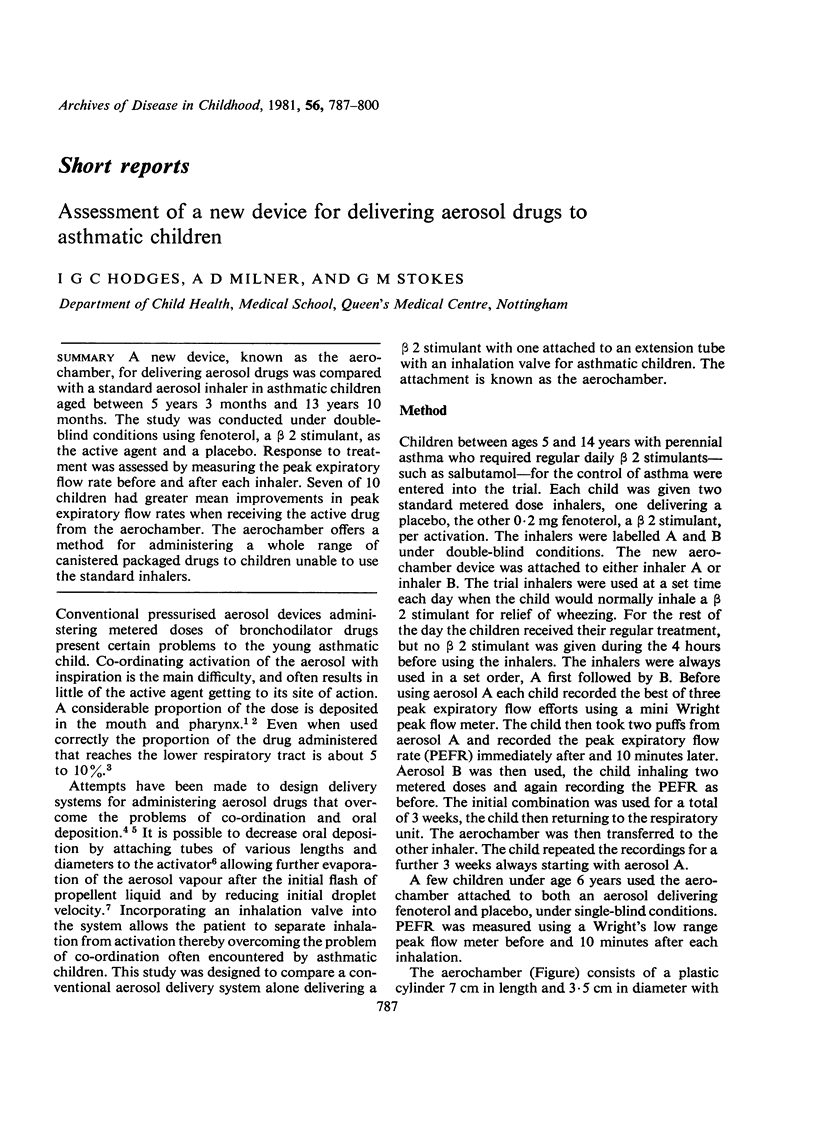Abstract
A new device, known as the aero-chamber, for delivering aerosol drugs was compared with a standard aerosol inhaler in asthmatic children aged between 5 years 3 months and 13 years 10 months. The study was conducted under double-blind conditions using fenoterol, a beta 2 stimulant, as the active agent and a placebo. Response to treatment was assessed by measuring the peak expiratory flow rate before and after each inhaler. Seven of 10 children had greater mean improvements in peak expiratory flow rates when receiving the active drug from the aerochamber. The aerochamber offers a method for administering a whole range of canistered packaged drugs to children unable to use the standard inhalers.
Full text
PDF


Selected References
These references are in PubMed. This may not be the complete list of references from this article.
- Ellul-Micallef R., Morén F., Wetterlin K., Hidinger K. C. Use of a special inhaler attachment in asthmatic children. Thorax. 1980 Aug;35(8):620–623. doi: 10.1136/thx.35.8.620. [DOI] [PMC free article] [PubMed] [Google Scholar]
- Gomm S. A., Keaney N. P., Winsey N. J., Stretton T. B. Effect of an extension tube on the bronchodilator efficacy of terbutaline delivered from a metered dose inhaler. Thorax. 1980 Jul;35(7):552–556. doi: 10.1136/thx.35.7.552. [DOI] [PMC free article] [PubMed] [Google Scholar]
- Paterson I. C., Crompton G. K. Use of pressurised aerosols by asthmatic patients. Br Med J. 1976 Jan 10;1(6001):76–77. doi: 10.1136/bmj.1.6001.76-a. [DOI] [PMC free article] [PubMed] [Google Scholar]


